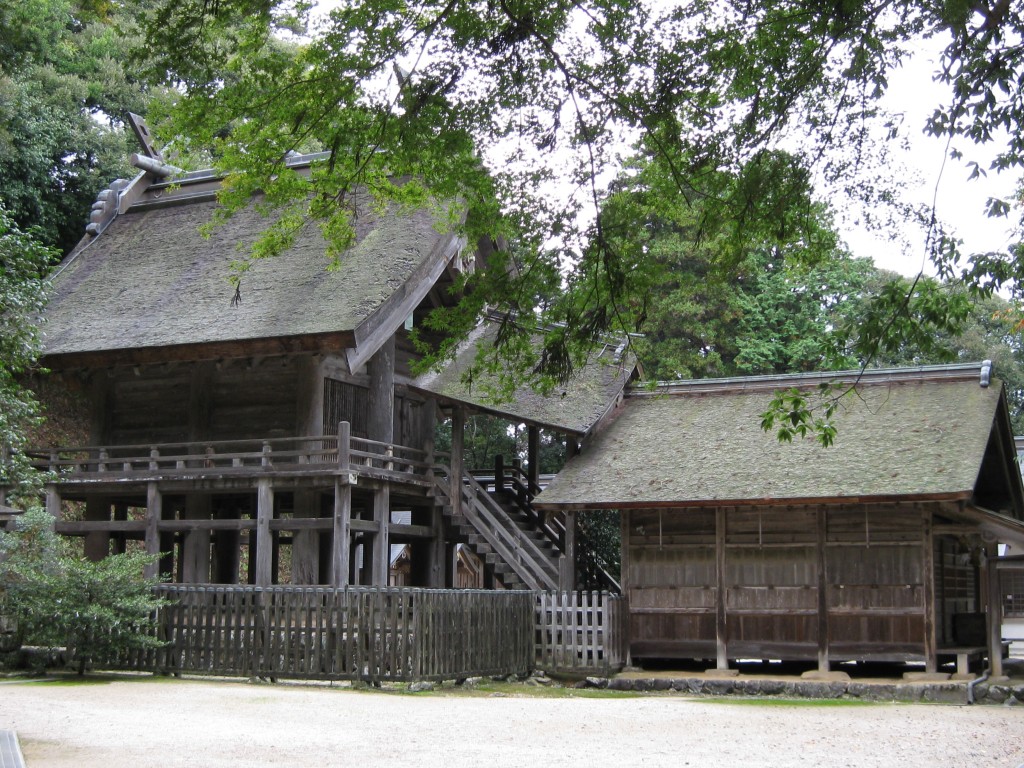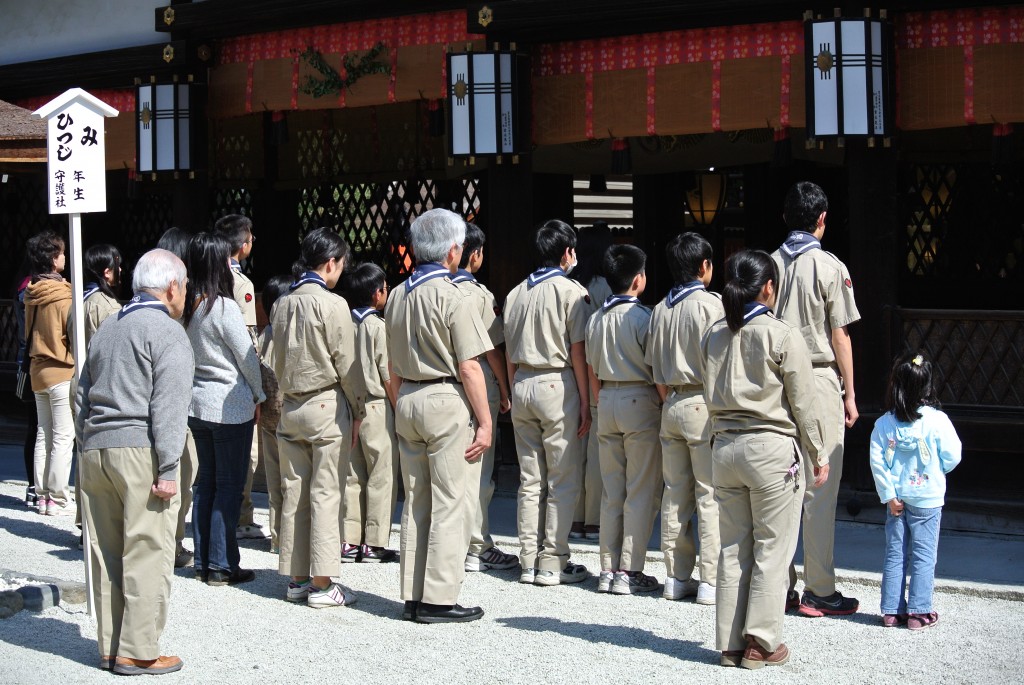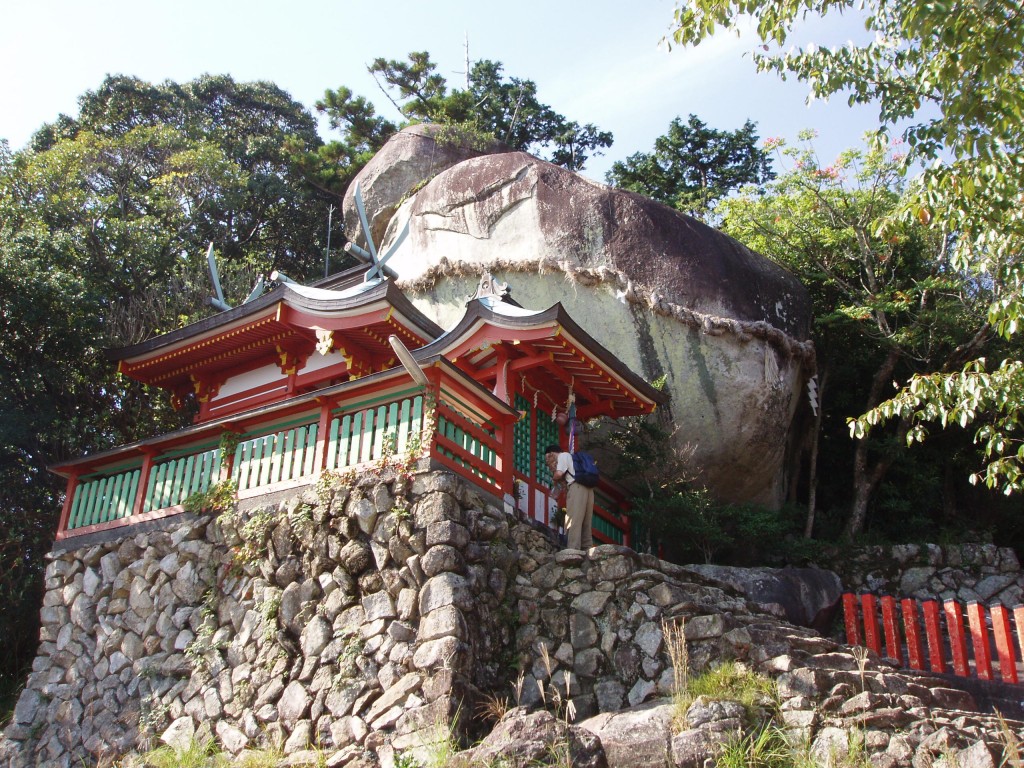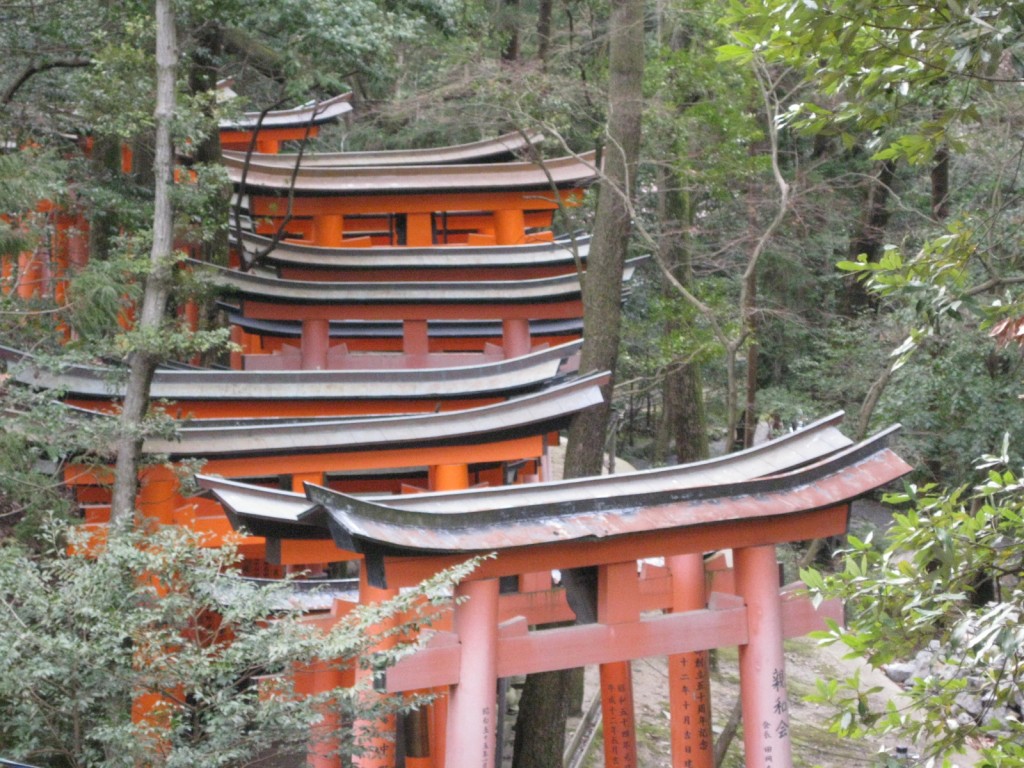
The rather wonderful Kumaso Shrine in the Izumo region, with a Worship Hall (haiden) to the right of the elevated Sanctuary (honden), and a connecting corridor to signify the stairway to heaven
The following is part one of a series on shrines and shrine buildings, abridged and adapted from the Introduction of Shinto Shrines by Joseph Cali and John Dougill (mainly the former, I hasten to add). The book was published by the University of Hawaii Press in 2013. Later extracts will deal with shrine items and architectural forms. This part concerns the nature and purpose of shrine visits.
***********************************************************************************************
What benefit might there be in visiting a shrine for someone who has grown up in another country with different cultural and religious values? There are two particular benefits that come to mind, one of which is of course spiritual. Quite apart from the question of organized religion, a shrine is a place where one can fold one’s hands, bow one’s head, and say a prayer for oneself or a loved one.

Prayer at shrines can simply be a matter of paying respects to the kami
Though there are certain prescribed methods, the question of how or to whom one prays is ultimately a personal matter. When they pray at a shrine, Japanese are not necessarily praying to a specific kami. Indeed, the number of kami in a particular shrine and their actual names are usually unknown to the average worshipper, who may only refer to the kami by the name of the shrine.
A second reason to visit a shrine is for the cultural and recreational aspects. This has long been a traditional part of the Japanese experience as well. Many of the shrines selected for this book are very old and have buildings or grounds that are of historical significance. Most contain, or are designated, National Treasures or Important Cultural Properties. It means that they have a recognized importance in the history of the country or the locality. Some are significant works of architecture and art in their own right. UNESCO’s World Heritage Committee has recognized several shrines (see here), such as Nikko Toshogu and Itsukushima Jinja, as outstanding examples of cultural value and natural beauty worthy of special attention. Many are in stunning settings.
Because the expression of Shinto faith is often in the awe one feels when standing before magnificent features of nature, shrines tend to be set in such places. It is one reason why, even in densely populated areas, the immediate surroundings of a shrine can act as an oasis of greenery. In other cases, the location is remote enough to keep it untouched by urban blight.

The awe-inspiring Kamikura Jinja in Wakayama Prefecture - safe from urban blight!
Unlike great cathedrals and mosques, shrines tend to be modest affairs. Hopefully reading this book will help to appreciate them. Many of the shrines are among the most popular in the nation, which means they are often crowded, especially at peak times of the day and on holidays. If you go to such a shrine anticipating a solemn and silent communion with the spirits, it is better to visit very early in the morning. (Many shrine grounds are open twenty-four hours a day, seven days a week; however, the main buildings and the area immediately around them may only be open during daylight hours.)
It’s hard not to feel the spirituality of a place like Fushimi Inari Taisha in Kyoto, when walking up the mountain paths through the myriad red torii in the early morning. On the other hand, you may want to visit when the shrine is at its busiest, such as New Year’s, or at its most raucous during a festival (matsuri). In that case, the atmosphere reveals a more lively and convivial spirit.
The Japanese have, from ancient times, combined devotion with recreation even to the point of wild abandon—as in the okage mairi (“thanksgiving pilgrimage”) between the sixteenth and nineteenth centuries that saw millions literally dancing down the highways on pilgrimage to temples and shrines. However, as a foreigner, it is best to be mindful of the feelings of others, so if you came to take pictures, by all means take them, but respect the fact that some of the places you want to shoot may be off-limits. For example, most of the honden where the kami reside are located behind a fence, making a close view impossible. Hopefully the descriptions in this book of the structures and their history will help to compensate for what can’t be seen.

Shrines can be a gateway into the heart of nature, as here with the torii of Fushimi Inari

Thanks for this amplification of Shrines book which I have and am reading
this is a very worthwhile ‘addition’ to that book. : )
I hope to visit Fushimi inari and others May 2015.
graham australia